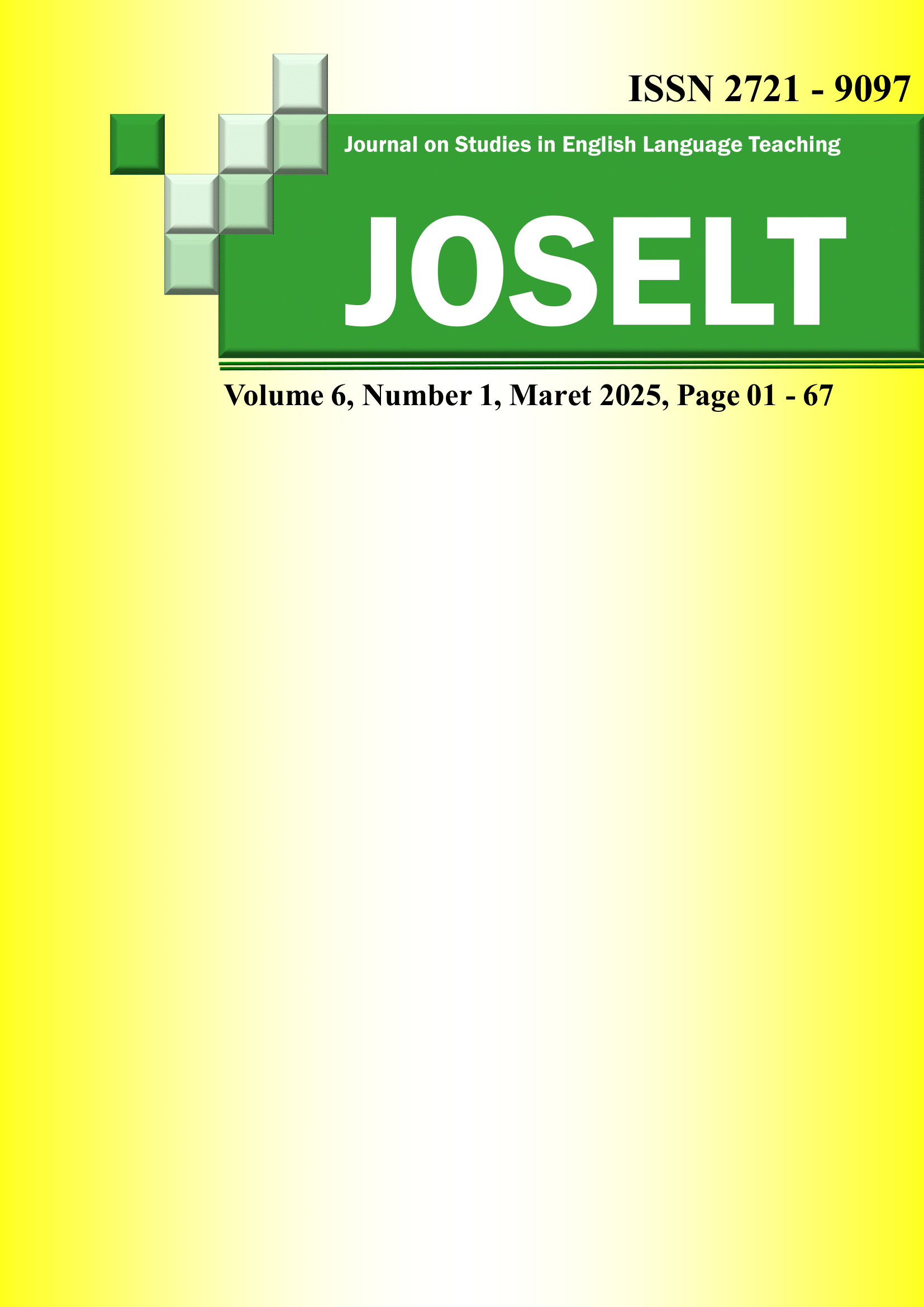The Correlation between Motivation and Writing Skill of the Seventh-Grade Students
Keywords:
correlation, motivation, writing skillAbstract
Writing is a vital learning tool that helps students better grasp language elements in authentic settings, which is why it is so important in language instruction. This implies that in order for students to write well, they must use their minds. Motivation is therefore essential in writing since it is an internal force that motivates and enables students to act. The researcher is therefore interested in determining whether motivation and writing ability are significantly correlated. The primary objective of this research is to ascertain whether there is a noteworthy correlation between the writing proficiency and motivation of seventh-grade students at SMP Negeri 14 Denpasar during the 2024–2025 academic year. Using an ex-post facto design and a correlation technique, the study included 122 students from three classes who were chosen using cluster sampling. A writing exam and a questionnaire were the research instruments used to gather data. The research process revealed a high correlation between writing skills and motivation. The findings demonstrated a considerable correlation (a Pearson correlation coefficient of 0.727) between students' writing abilities and motivation. In summary, writing proficiency and motivation are significantly correlated among seventh-grade students at SMP Negeri 14 Denpasar in the 2024–2025 school year.
References
Alzubi, A. A. F., & Nazim, M. (2024). Students' intrinsic motivation in EFL academic writing: Topic-based interest in focus. Heliyon, 10(1).
Amalia, H., Abdullah, F., & Fatimah, A. S. (2021). Teaching writing to junior high school students: A focus on challenges and solutions. Journal of Language and Linguistic Studies, 17(S2), 794-810.
Brophy, J. (2004). Motivating students to learn ( 3^rd Edition). London: Lawrence Erlbaum Associatiates.
Cohen, L., Manion, L., & Morisson, K. (2007). Research method in education (6^th Edition). New York: Routledge.
Dörnyei, Z., & Ushioda, E. (2011). Teaching and researching motivation (2^nd Edition). NewYork: Cambridge University Press.
Duha, M. (2022). Students’ difficulties in writing descriptive text. FAGURU: Jurnal Ilmiah Mahasiswa Keguruan, 1(2), 13-25.
Kothari, C. R. (2004). Research methodology (2^(nd )Edition). New Delhi: New Age International.
Moybeka, A. M., Bosco, F. H., Apalem, C. R., Chandra, D. A., & Efendi, E. (2023). Developing EFL students’ writing ability through contextual teaching and learning (a classroom action research study). Journal of English Culture, Language, Literature and Education, 11(1), 79-97.
Oshima, A., & Hogue, A. (2007). Introduction to academic writing (3^rdEdition). NewYork: Pearson Education.
Pramerta, I. G. P. A., & Malayfana, Y. (2024). Meningkatkan kemampuan belajar menulis descriptive text dengan media gambar (Picture and Picture)” pada siswa kelas VII UPTD SMP Negeri Lantoka tahun pelajaran 2023/2024. In Mahasaraswati Seminar Nasional Pendidikan Profesi Guru (Vol. 1, No. 1, pp. 129-135).
Singh, K. (2007). Quantitative social research methods (1^st Edition). New Delhi: Sage Publications.
Sugiyono, P. D. (2015). Metode penelitian kuantitatif kualitatif dan R&D. Bandung: Alfabeta.
Wang, H., & Troia, G. A. (2023). How students' writing motivation, teachers' personal and professional attributes, and writing instruction impact student writing achievement: a two-level hierarchical linear modeling study. Frontiers in psychology, 14, 1213929.
Zemach, D. E., & Islam, C. (2005). Paragraph writing from sentence to paragraph. London: Macmillan Publishers.

